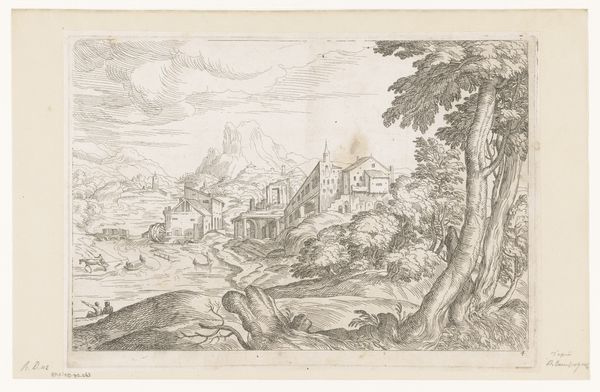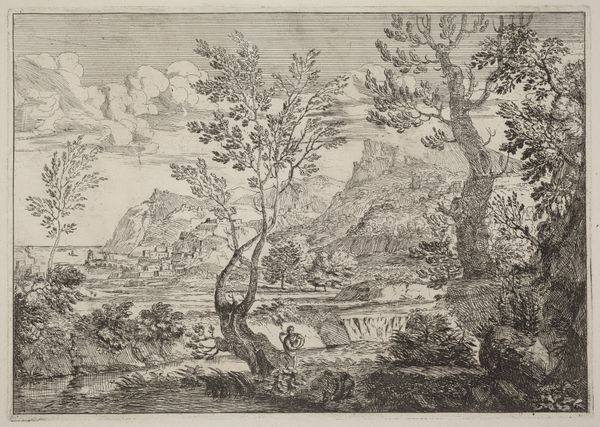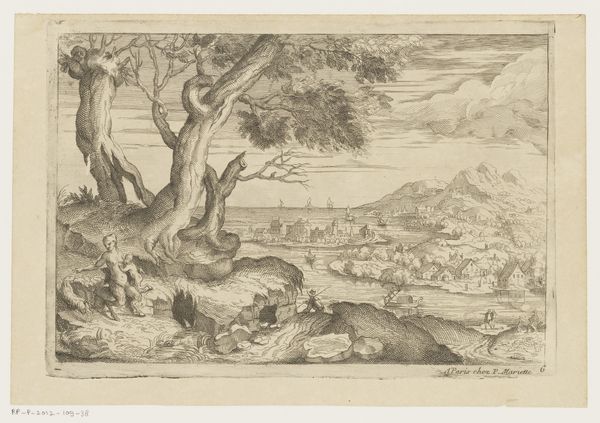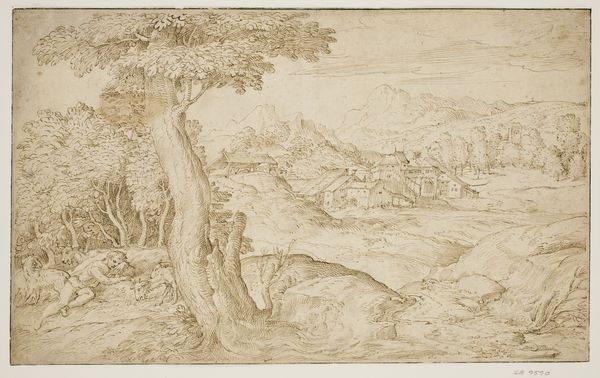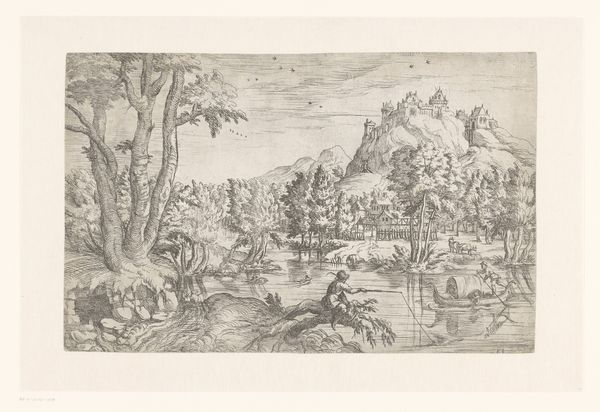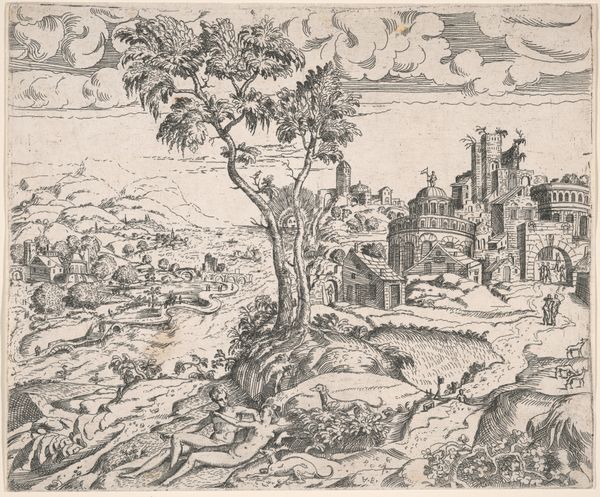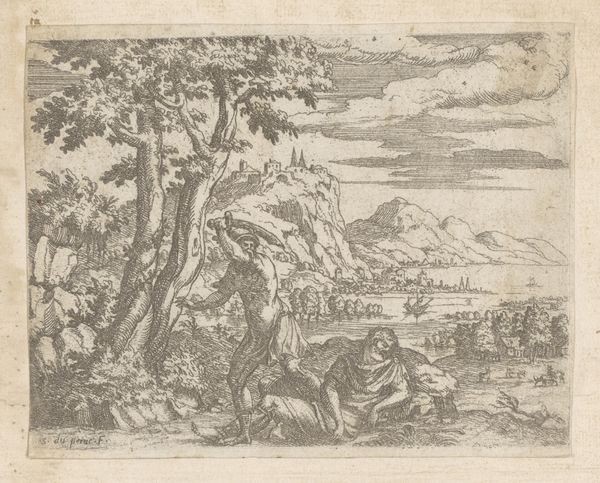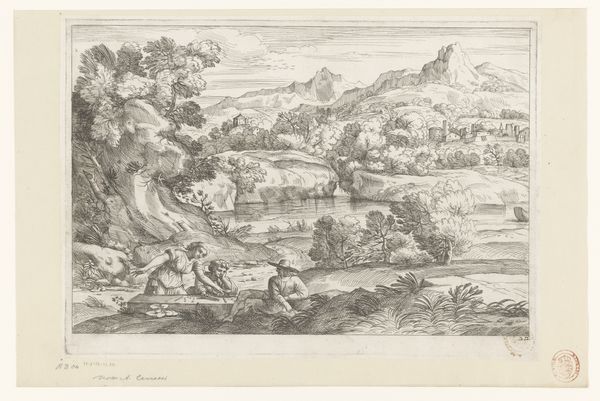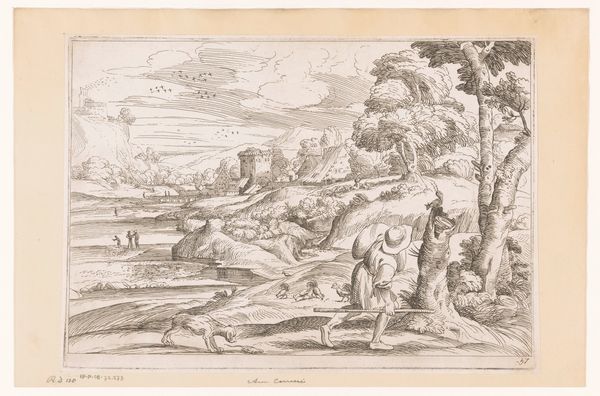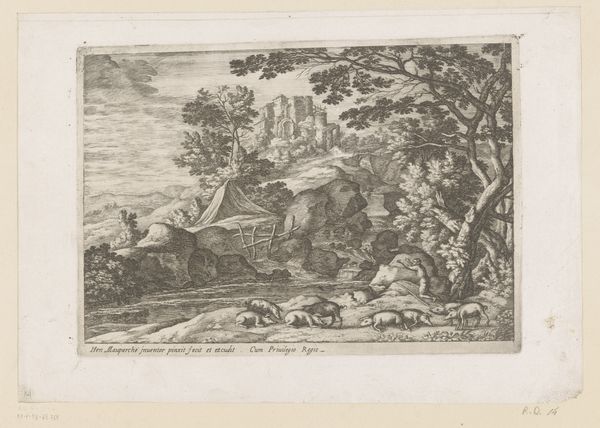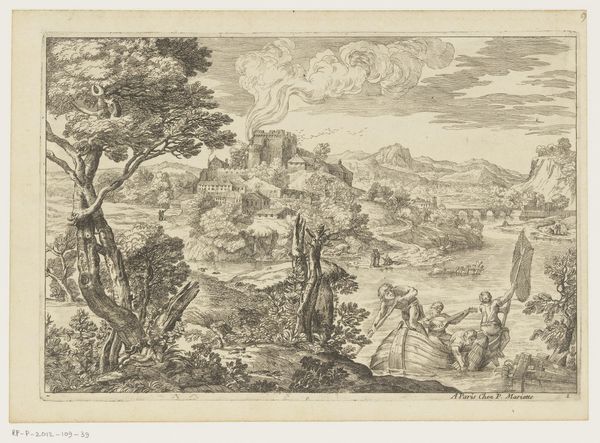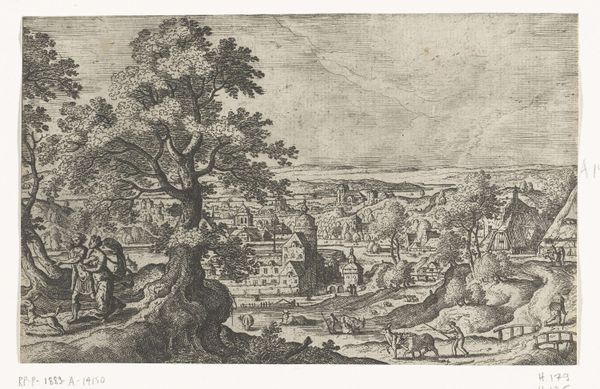
Landschap met vrouwelijke sater die een saterkind voedt 1535 - 1604
0:00
0:00
drawing, print, paper, engraving
#
drawing
#
ink paper printed
# print
#
old engraving style
#
landscape
#
mannerism
#
paper
#
engraving
Dimensions: height 158 mm, width 277 mm
Copyright: Rijks Museum: Open Domain
Curator: This is Étienne Dupérac’s "Landscape with a Female Satyr Nursing a Satyr Child," a print from somewhere between 1535 and 1604. The Rijksmuseum is fortunate to have a copy in its collection. Editor: What strikes me first is the odd mixture of delicate line work and chaotic energy. It feels dreamlike, a touch unsettling. Curator: The engraving process lends itself to that detailed line work. The fine lines of the engraving precisely capture the texture of the paper itself. It's a tactile experience even to just look at it. The printing process makes it inherently reproducible, so one can imagine how accessible imagery like this was, relative to painted works. Editor: Absolutely. And what about this satyr family? The female figure suckling her child, amidst a wide panoramic view… It pulls together classical mythology with everyday domesticity. Are they symbols of wild abandon and natural parenting? Curator: One could certainly interpret the satyr family as representative of a classical theme made relevant in the context of a growing awareness of humanism. Consider that prints like these traveled widely. They would have been accessible to artisans and scholars alike, impacting material culture in multiple ways across different strata of society. Editor: You are absolutely correct; in its own way, the symbolic union presented on this landscape democratized access to previously limited iconography. Note also how the gnarled tree echoes the satyr's wildness. The landscape isn’t merely a backdrop but participates in the overall visual metaphor. Curator: Agreed. And when we think about the production and consumption of prints like these, the social implications become rather complex. Were such accessible images viewed differently across various societal groups? Editor: Probably. This print provides endless material for interpretations. It underscores how seemingly simple images contain layer upon layer of meaning that invite deep contemplation about our values. Curator: Indeed, looking at Dupérac's print from the perspective of material and process reminds us that art's influence is rooted in the how as much as in the what.
Comments
No comments
Be the first to comment and join the conversation on the ultimate creative platform.
